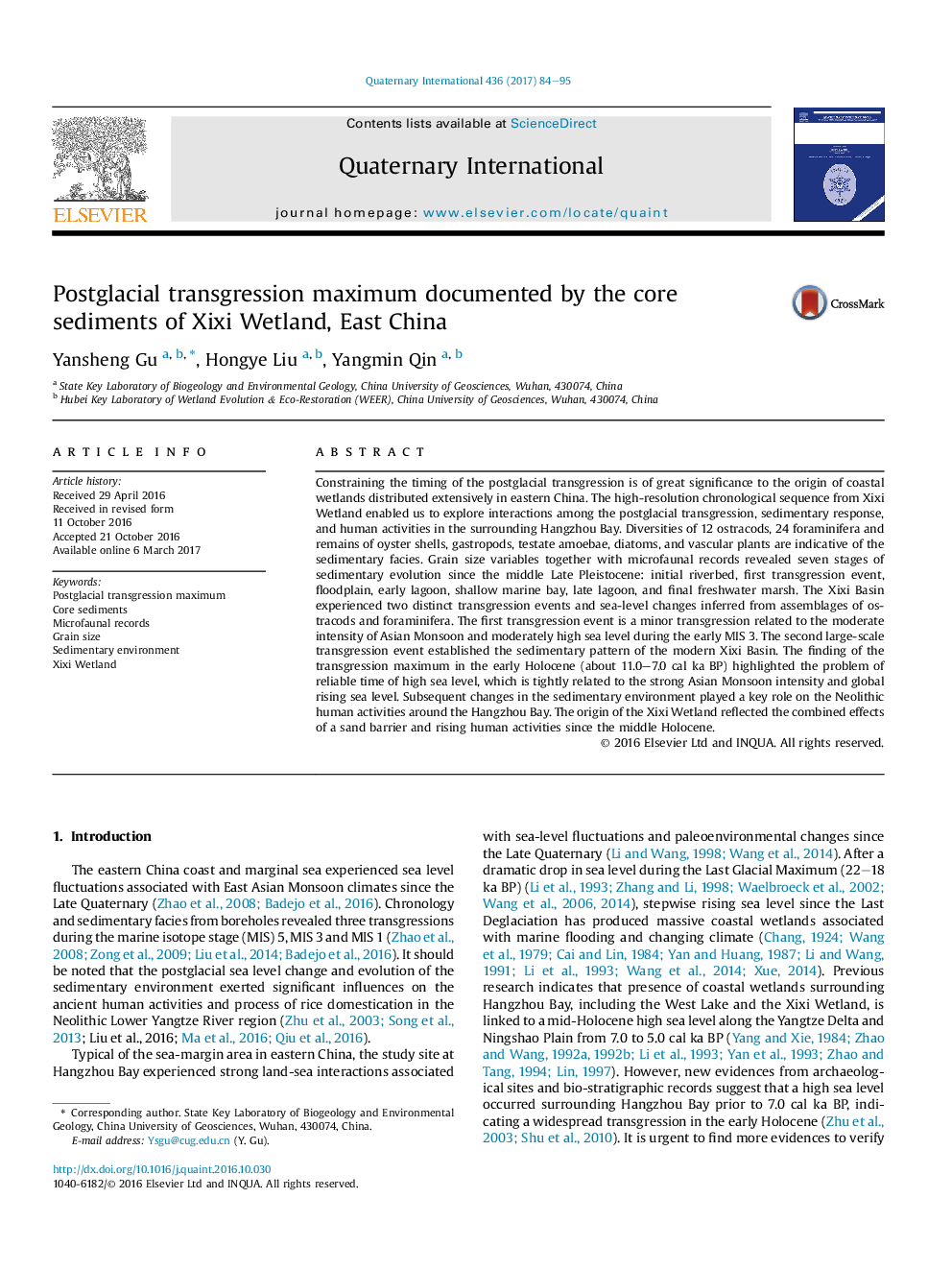| Article ID | Journal | Published Year | Pages | File Type |
|---|---|---|---|---|
| 5113544 | Quaternary International | 2017 | 12 Pages |
Abstract
Constraining the timing of the postglacial transgression is of great significance to the origin of coastal wetlands distributed extensively in eastern China. The high-resolution chronological sequence from Xixi Wetland enabled us to explore interactions among the postglacial transgression, sedimentary response, and human activities in the surrounding Hangzhou Bay. Diversities of 12 ostracods, 24 foraminifera and remains of oyster shells, gastropods, testate amoebae, diatoms, and vascular plants are indicative of the sedimentary facies. Grain size variables together with microfaunal records revealed seven stages of sedimentary evolution since the middle Late Pleistocene: initial riverbed, first transgression event, floodplain, early lagoon, shallow marine bay, late lagoon, and final freshwater marsh. The Xixi Basin experienced two distinct transgression events and sea-level changes inferred from assemblages of ostracods and foraminifera. The first transgression event is a minor transgression related to the moderate intensity of Asian Monsoon and moderately high sea level during the early MIS 3. The second large-scale transgression event established the sedimentary pattern of the modern Xixi Basin. The finding of the transgression maximum in the early Holocene (about 11.0-7.0Â cal ka BP) highlighted the problem of reliable time of high sea level, which is tightly related to the strong Asian Monsoon intensity and global rising sea level. Subsequent changes in the sedimentary environment played a key role on the Neolithic human activities around the Hangzhou Bay. The origin of the Xixi Wetland reflected the combined effects of a sand barrier and rising human activities since the middle Holocene.
Related Topics
Physical Sciences and Engineering
Earth and Planetary Sciences
Geology
Authors
Yansheng Gu, Hongye Liu, Yangmin Qin,
